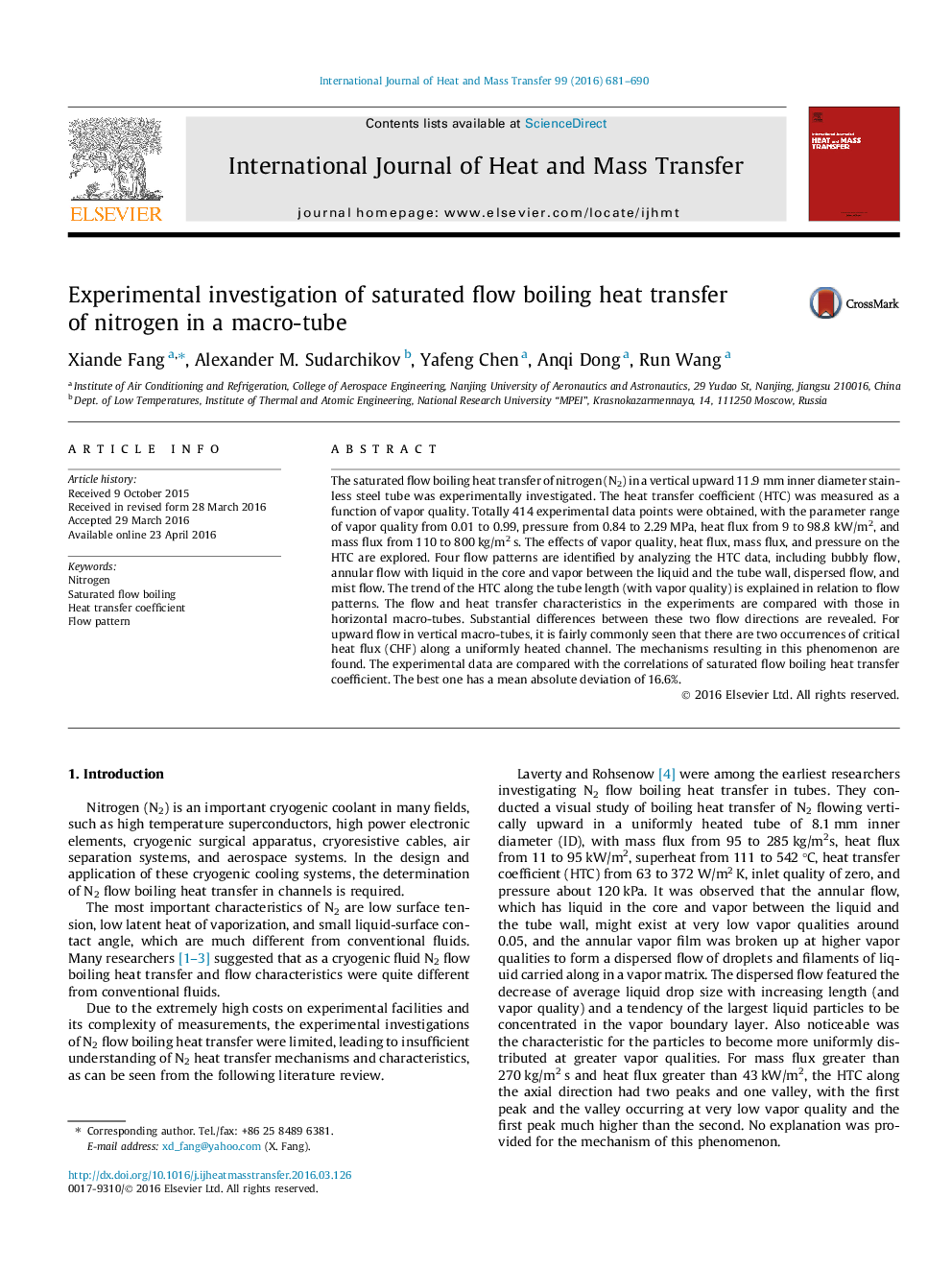| Article ID | Journal | Published Year | Pages | File Type |
|---|---|---|---|---|
| 656488 | International Journal of Heat and Mass Transfer | 2016 | 10 Pages |
•Conducted experiments of N2 flow boiling heat transfer in a vertical macro-tube.•Analyzes effects of different parameters on heat transfer (HT) coefficient.•Identifies flow patterns by analyzing the experimental data.•Reveals mechanisms of two appearances of critical heat flux along a tube.•Compares flow and HT characteristics of vertical flow and horizontal flow.
The saturated flow boiling heat transfer of nitrogen (N2) in a vertical upward 11.9 mm inner diameter stainless steel tube was experimentally investigated. The heat transfer coefficient (HTC) was measured as a function of vapor quality. Totally 414 experimental data points were obtained, with the parameter range of vapor quality from 0.01 to 0.99, pressure from 0.84 to 2.29 MPa, heat flux from 9 to 98.8 kW/m2, and mass flux from 110 to 800 kg/m2 s. The effects of vapor quality, heat flux, mass flux, and pressure on the HTC are explored. Four flow patterns are identified by analyzing the HTC data, including bubbly flow, annular flow with liquid in the core and vapor between the liquid and the tube wall, dispersed flow, and mist flow. The trend of the HTC along the tube length (with vapor quality) is explained in relation to flow patterns. The flow and heat transfer characteristics in the experiments are compared with those in horizontal macro-tubes. Substantial differences between these two flow directions are revealed. For upward flow in vertical macro-tubes, it is fairly commonly seen that there are two occurrences of critical heat flux (CHF) along a uniformly heated channel. The mechanisms resulting in this phenomenon are found. The experimental data are compared with the correlations of saturated flow boiling heat transfer coefficient. The best one has a mean absolute deviation of 16.6%.
